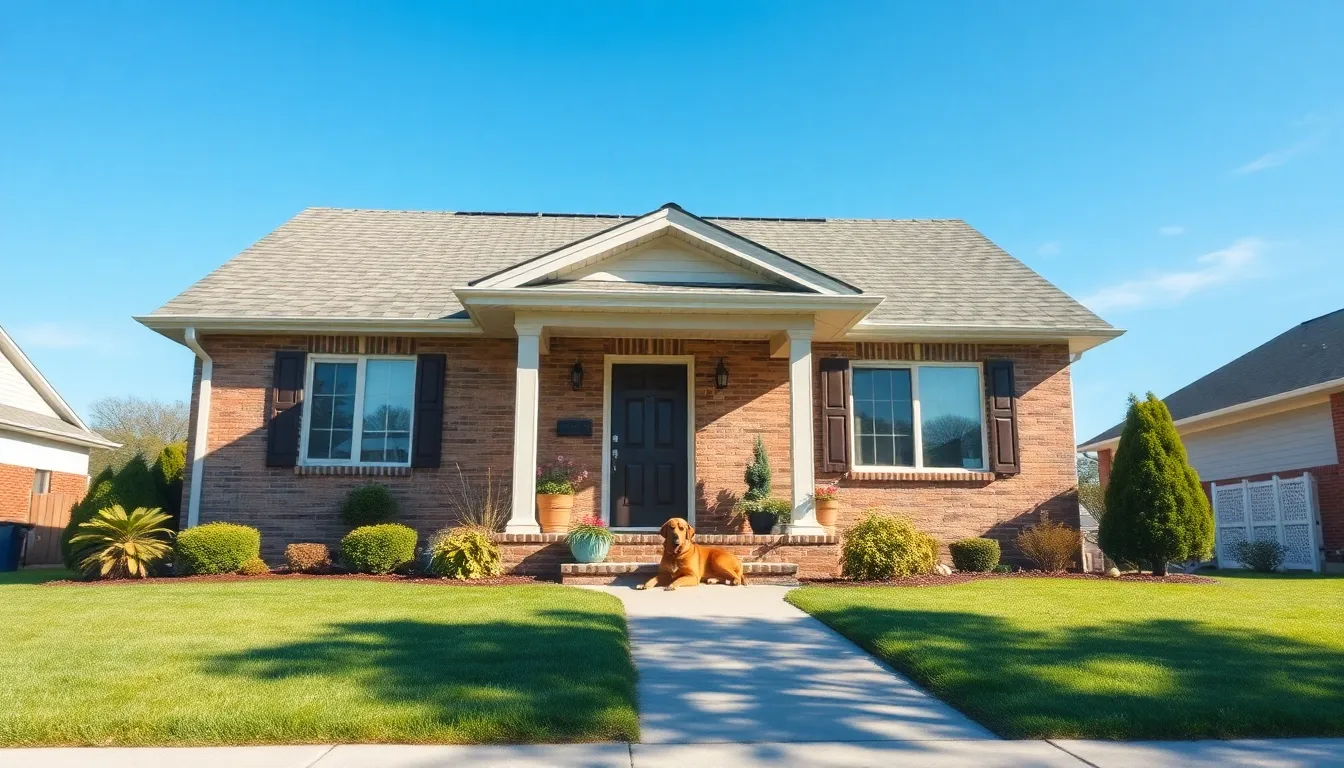Table of Contents
ToggleNavigating the world of home insurance can feel overwhelming. With so many options and terms to understand, homeowners often find themselves with more questions than answers. From coverage types to policy limits, it’s crucial to grasp the essentials to protect one of life’s biggest investments.
This article addresses the most common home insurance FAQs, helping readers make informed decisions. Whether someone’s a first-time buyer or looking to switch providers, understanding these key concepts can lead to better coverage and peace of mind. Let’s dive into the most pressing questions that can help demystify home insurance and ensure every homeowner is well-prepared.
Understanding Home Insurance
Home insurance protects homeowners against financial losses from risks like theft, natural disasters, and liability claims. It’s essential for safeguarding property and investments.
What Is Home Insurance?
Home insurance is a contract between the homeowner and the insurance provider, covering damages to the home and its contents. Basic coverage includes protection against hazards such as fire, water damage, and theft. Homeowners must choose a policy that aligns with their specific needs and property value to ensure adequate coverage.
Types of Home Insurance Policies
Home insurance comes in several types, each designed to cater to different homeowner needs:
- HO-1 (Basic Form): Offers limited coverage for specific perils, including fire and theft. It’s often cost-effective but provides minimal protection.
- HO-2 (Broad Form): Provides broader coverage than HO-1, protecting against several additional risks. It covers both the home and personal belongings.
- HO-3 (Special Form): Generally the most popular policy, it covers the home for all risks except those specifically excluded. Personal property may have limited coverage.
- HO-4 ( renters Insurance): Designed for tenants, it covers personal belongings and liability but not the physical building. It protects renters from specific risks.
- HO-5 (Comprehensive Form): Offers extensive coverage for both home and personal property, covering all risks unless explicitly excluded. This policy often provides the highest level of protection.
- HO-6 (Condominium Insurance): Specifically for condo owners, it covers personal property and liability. It may also cover improvements made to the unit.
- HO-7 (Mobile Home Insurance): Provides tailored coverage for mobile homes, addressing specific needs related to mobile home ownership.
- HO-8 (Modified Coverage Form): Designed for older homes with reduced replacement value, covering actual cash value rather than replacement costs.
Choosing the right policy is crucial for effective protection against potential losses.
Coverage Details

Home insurance coverage provides vital financial protection for homeowners against various risks. Understanding specific coverages helps homeowners make informed choices regarding their insurance needs.
Dwelling Coverage
Dwelling coverage safeguards the physical structure of a home, including walls, roofs, and built-in appliances. This coverage typically includes protection against risks such as fire, windstorm, and vandalism. It’s crucial for homeowners to estimate the home’s replacement cost accurately to ensure that sufficient coverage is in place.
Personal Property Coverage
Personal property coverage insures belongings within the home, such as furniture, electronics, and clothing. This coverage protects against damage or theft and generally includes provisions for items lost or damaged due to covered perils. Homeowners should evaluate the total value of their possessions to determine appropriate coverage limits.
Liability Coverage
Liability coverage protects homeowners against legal claims resulting from injuries or damages that occur on their property. This coverage generally includes medical expenses and legal fees incurred from lawsuits. Homeowners should consider their potential liabilities and ensure adequate limits to cover possible claims.
Common Home Insurance Questions
Home insurance encompasses various aspects important for homeowners. Addressing common questions helps clarify coverage options and processes.
What Does Home Insurance Cover?
Home insurance typically covers three main areas: dwelling, personal property, and liability.
- Dwelling Coverage: Protects the home’s structure against hazards like fire, wind damage, and vandalism.
- Personal Property Coverage: Insures personal belongings within the home, including furniture, electronics, and clothing, against damage or theft.
- Liability Coverage: Covers legal fees and medical expenses for injuries or damages occurring on the homeowner’s property.
It’s essential for homeowners to review their policies and understand the specific perils covered, as this influences their protection level.
How Does the Claims Process Work?
The claims process for home insurance generally follows these steps:
- Document the Damage: Homeowners should take photographs and make lists of damaged items as evidence.
- Notify the Insurance Provider: It’s crucial to report the incident to the insurance company promptly, typically within a specified time frame outlined in the policy.
- Claims Adjuster Evaluation: An assigned claims adjuster will assess the damage, requiring homeowners to provide documentation.
- Receive Claim Decision: After evaluation, homeowners will receive a claim decision, detailing the compensation amount or reasons for denial.
Understanding this process prepares homeowners to navigate claims efficiently and ensures timely support for their losses.
Factors Affecting Home Insurance Premiums
Home insurance premiums vary widely based on several factors. Understanding these elements helps homeowners anticipate potential costs and make informed decisions.
Location and Risk
Location significantly impacts home insurance premiums. Areas prone to natural disasters, such as floods or earthquakes, generally incur higher rates. For example, homes in coastal regions face increased risks of hurricanes, leading to elevated premiums. Additionally, crime rates influence costs; neighborhoods with higher crime rates tend to attract higher premiums due to increased theft risks. Proximity to fire services also matters; homes located near fire stations may have lower premiums, reflecting reduced response times during emergencies.
Policy Types and Coverage Amounts
The type of home insurance policy selected directly affects premium amounts. Basic policies, like HO-1, typically cost less than comprehensive policies such as HO-5. Coverage amounts chosen by homeowners also play a vital role. Higher coverage limits for dwelling or personal property result in increased premiums, while lower coverage limits might save money but reduce protection. Homeowners are encouraged to balance adequate protection with affordability when selecting policy types and coverage amounts, ensuring financial security without overspending.
Tips for Choosing the Right Home Insurance
Choosing the right home insurance involves evaluating personal needs and comparing available options. By following specific strategies, homeowners can secure suitable coverage at an affordable price.
Assessing Your Needs
Assessing personal needs is crucial for effective home insurance selection. Homeowners should consider the following factors:
- Property Value: Understand the market value of the home to ensure adequate dwelling coverage. This prevents underinsurance in the event of a loss.
- Contents Value: Create an inventory of personal belongings and their value. This facilitates appropriate personal property coverage.
- Liability Risk: Evaluate potential liability risks associated with the property. Higher risk areas may necessitate additional liability coverage.
- Home Features: Note specific features of the home, such as a pool or trampoline, which may affect insurance needs and premiums.
- Location: Consider location-related risks, such as natural disasters. This influences the type of coverage required.
Comparing Quotes
Comparing quotes promotes informed decision-making when selecting home insurance. Homeowners can follow these steps to effectively compare options:
- Obtain Multiple Quotes: Request quotes from at least three different insurance providers. This reveals a range of coverage options and premium prices.
- Review Coverage Details: Analyze the coverage limits, deductibles, and exclusions outlined in each quote. This highlights discrepancies and helps identify the best policy.
- Check Insurer Ratings: Research customer reviews and ratings of insurance companies. This provides insight into their service quality and claims handling.
- Ask About Discounts: Inquire about available discounts, such as bundling home and auto insurance or having security systems installed. These can lower premium costs.
- Evaluate the Claims Process: Review each company’s claims process. A straightforward and efficient claims experience is vital during stressful situations.
By considering these factors and following the outlined steps, homeowners can effectively navigate the home insurance market and secure a policy that meets their needs.
Navigating home insurance doesn’t have to be overwhelming. By understanding the key coverage types and policy options available, homeowners can make informed decisions that best suit their needs. It’s crucial to regularly review policies and stay updated on any changes that may affect coverage and premiums.
Taking the time to compare quotes and evaluate different providers helps ensure homeowners secure the right protection without breaking the bank. With the right knowledge and preparation, homeowners can confidently protect their investments and enjoy peace of mind.


